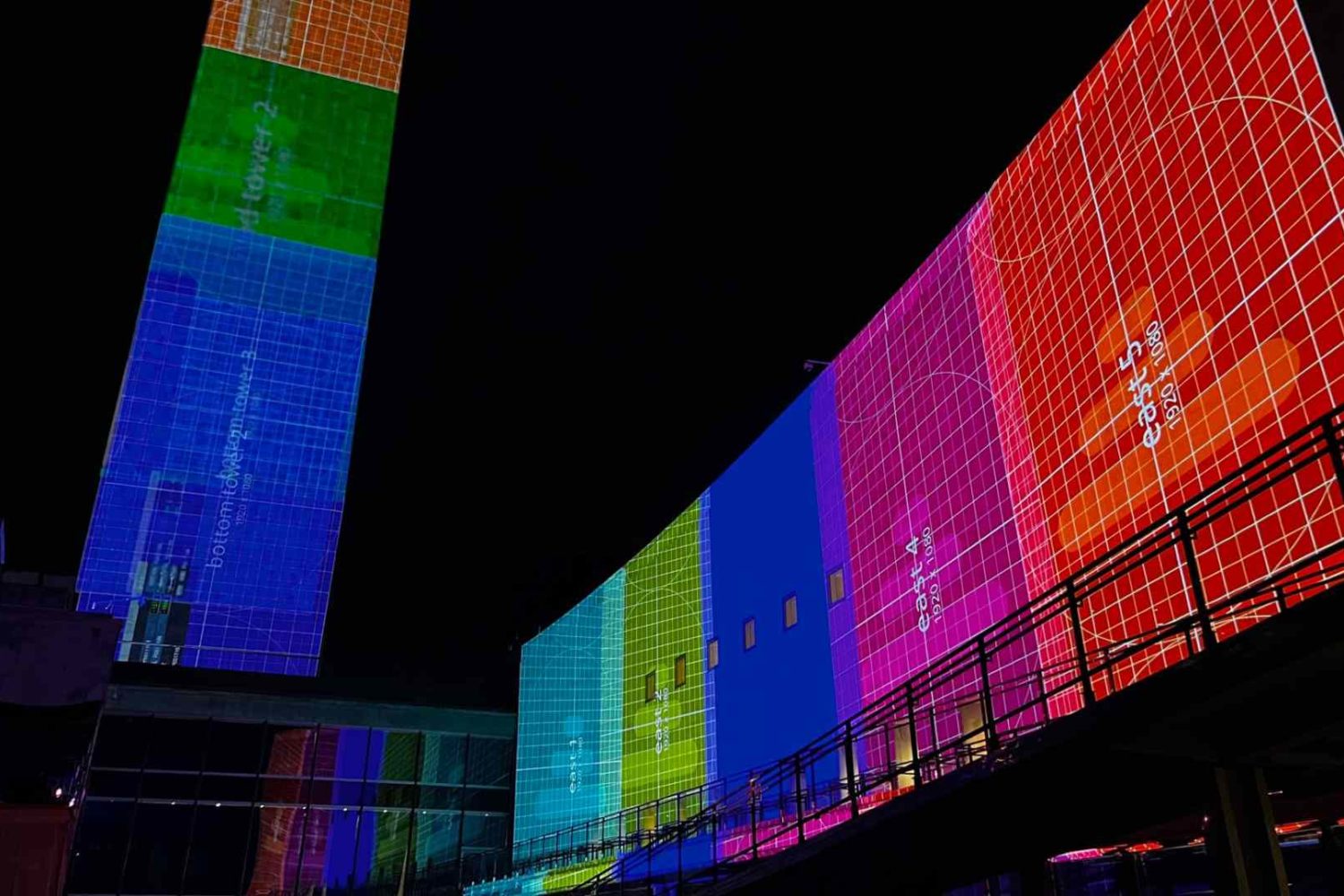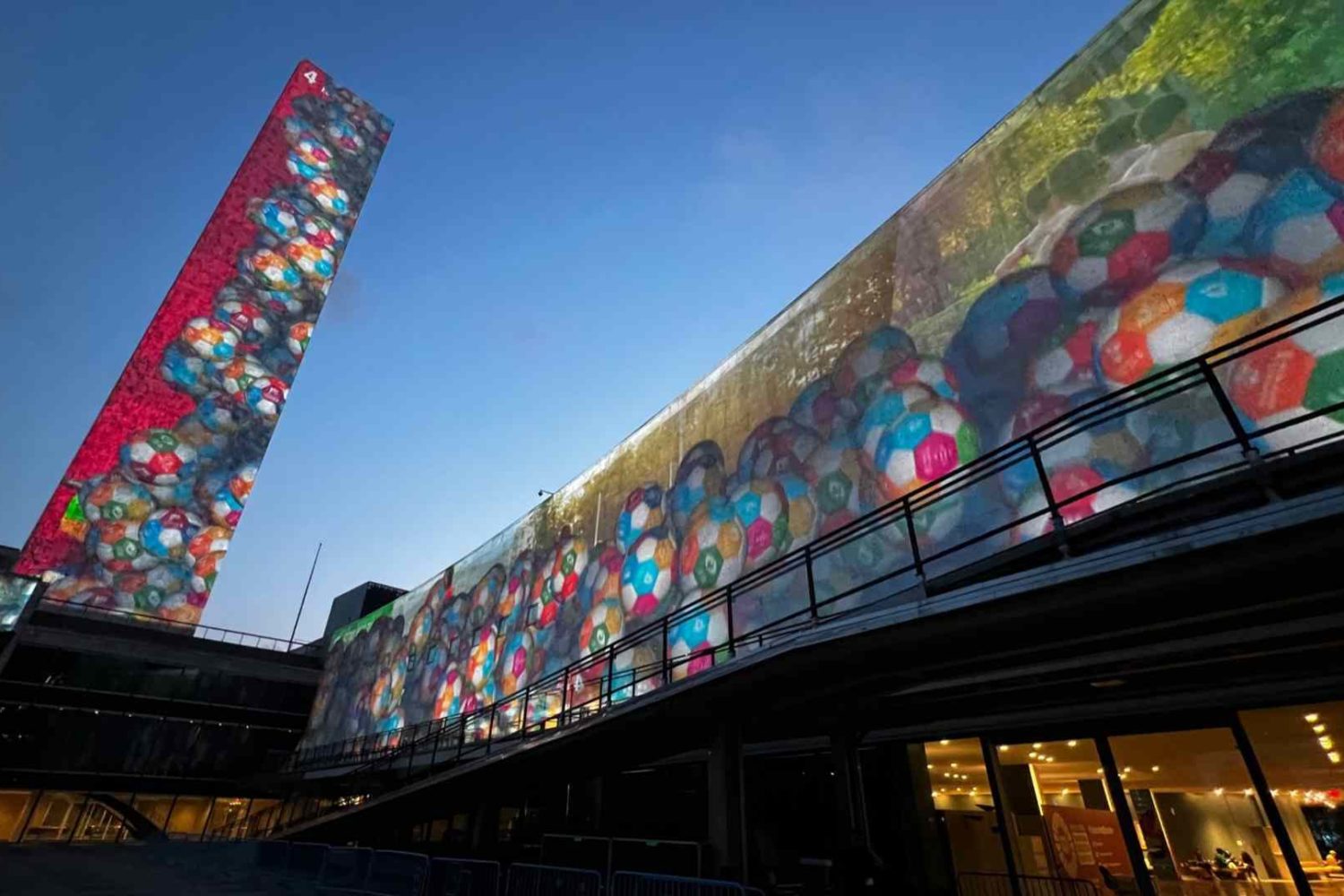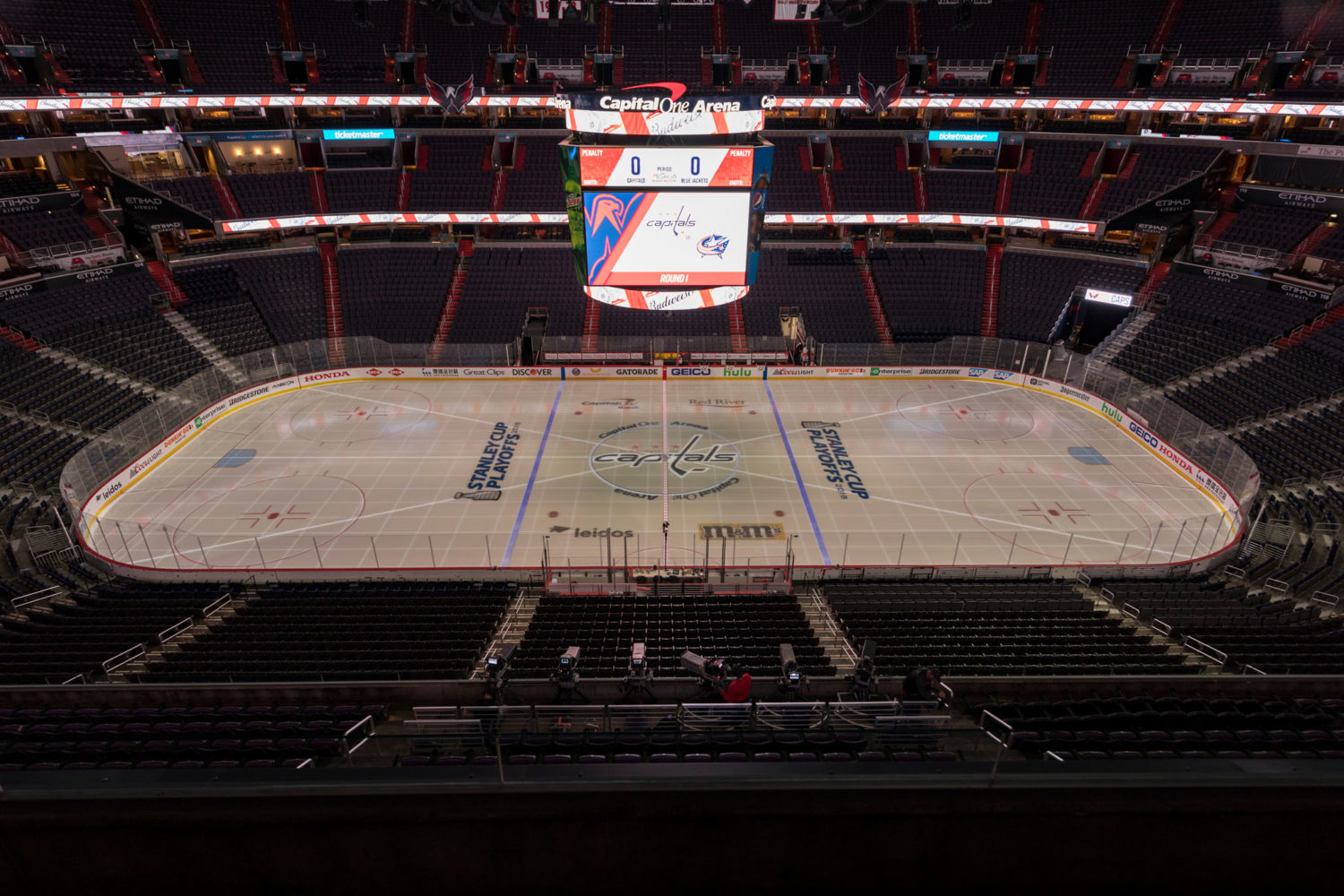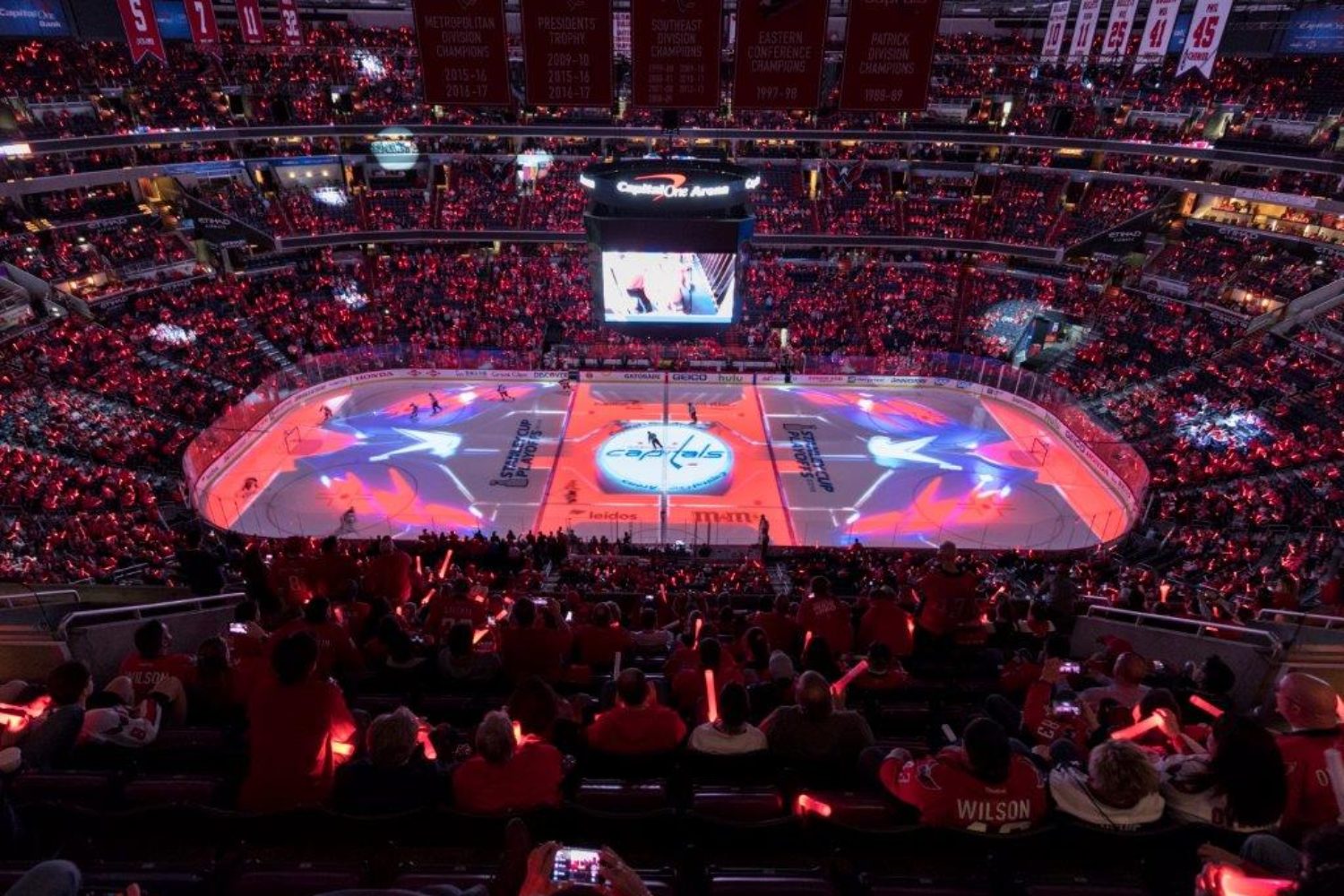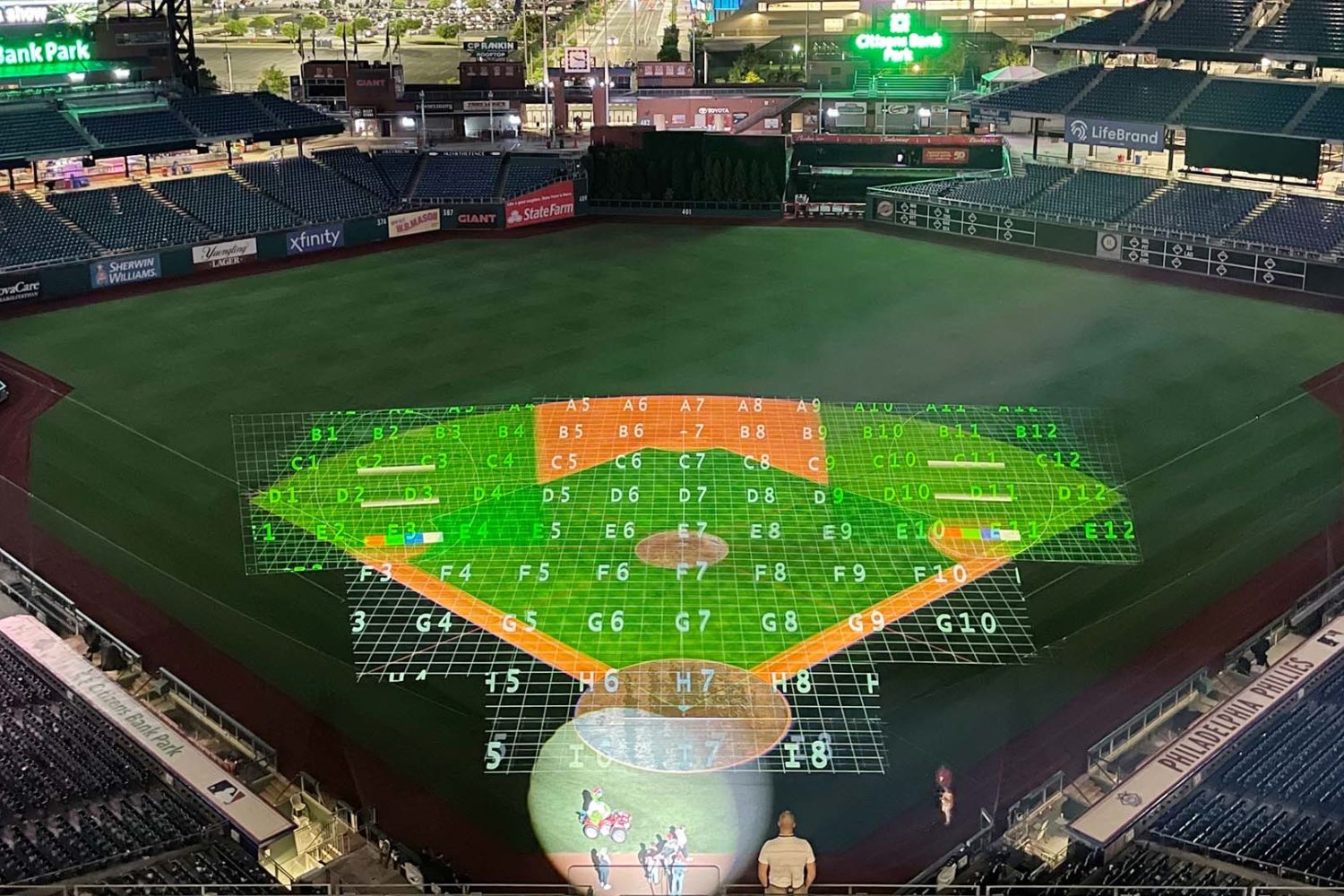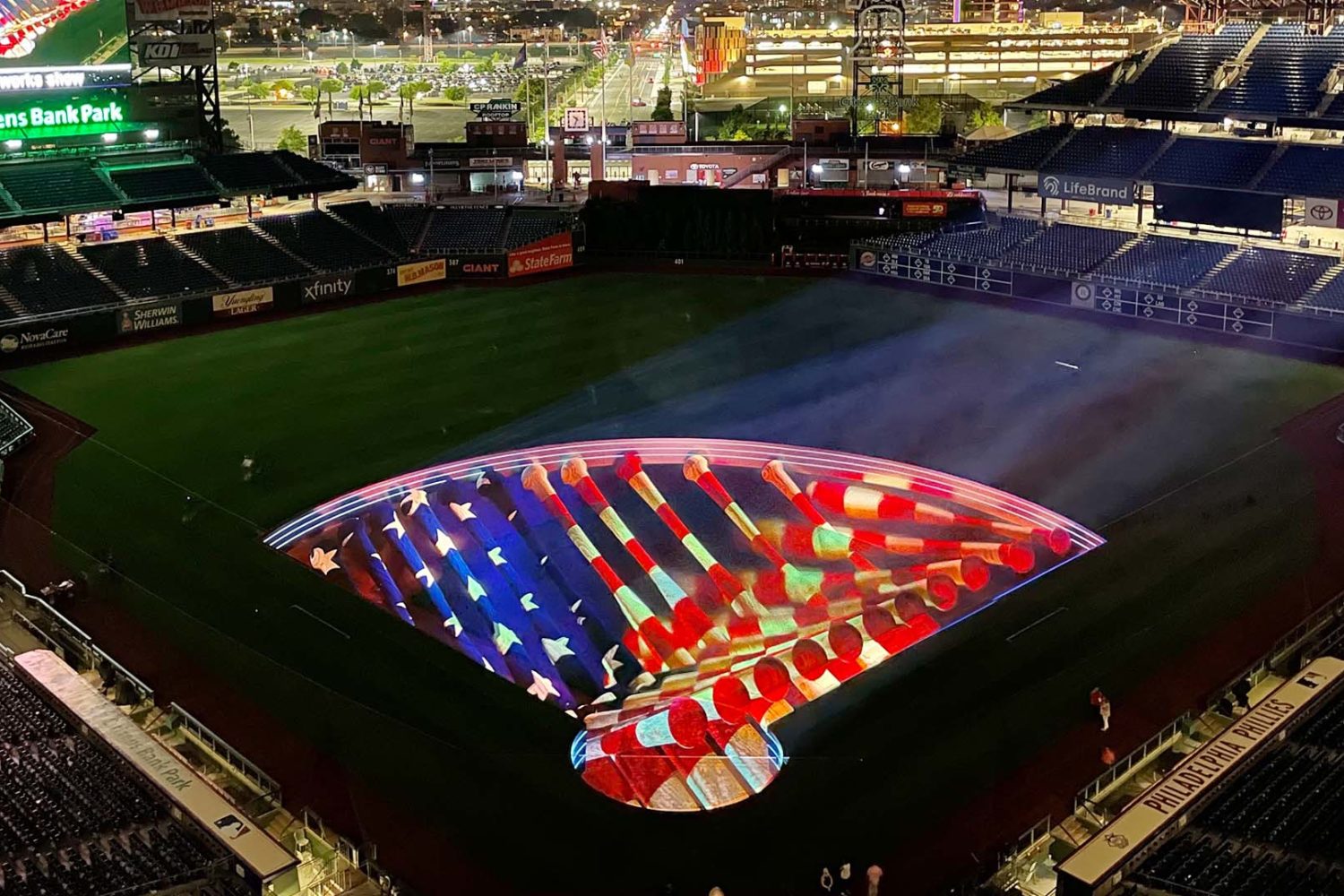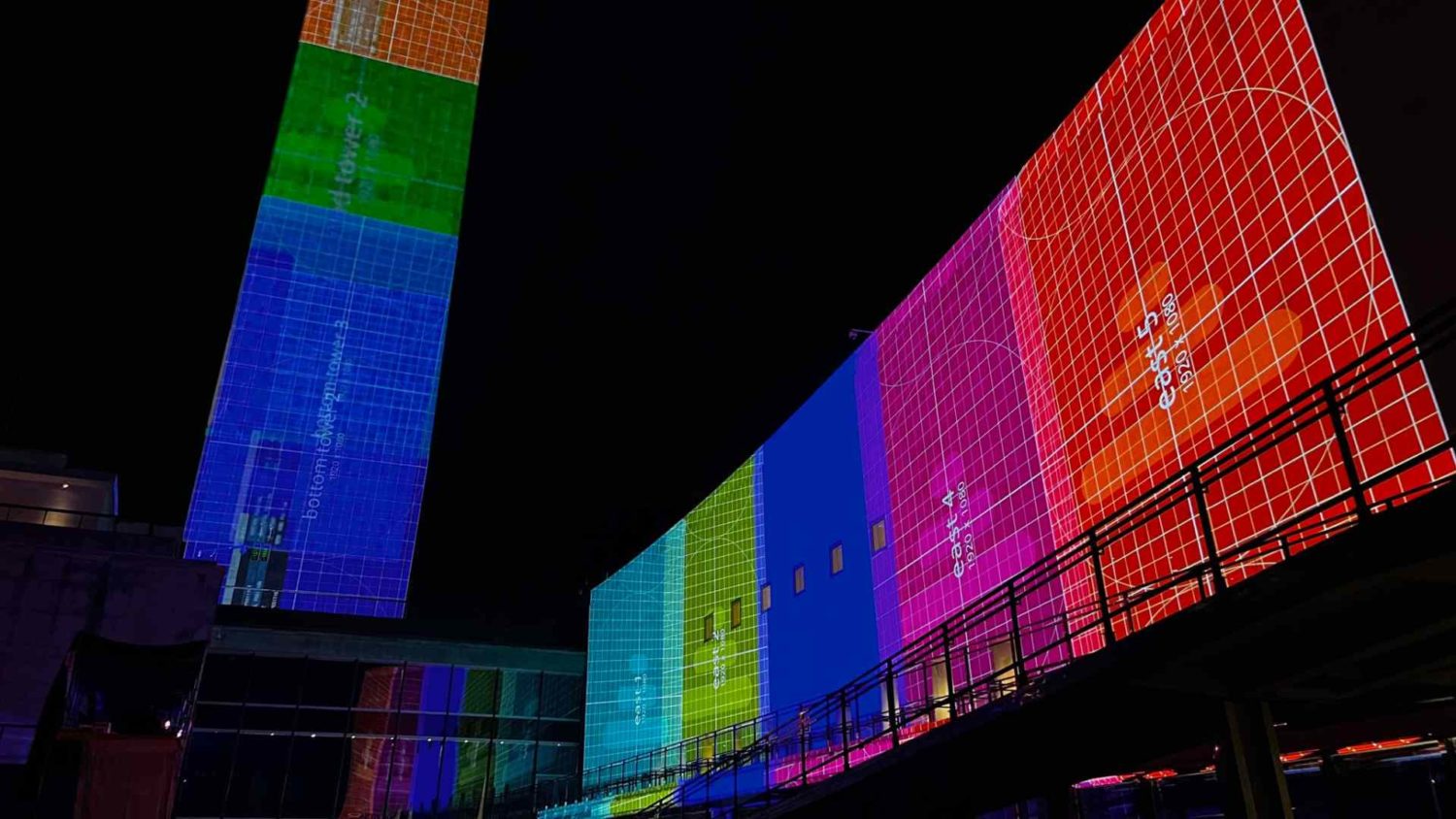PROJECTION MAPPING BASICS
Whether it’s your beloved home team fighting for a championship or your favorite artist performing for the crowd, live events provide experiences that can last a lifetime. One of the most popular ways to enhance these moments is through projection mapping. This technology uses projectors to illuminate buildings, from cathedrals and architectural landmarks to major sports arenas, fields, and courts, with intricate graphics that flow seamlessly across surfaces. These stunning designs captivate audiences, delivering a memorable and sophisticated event experience for fans and spectators alike.
Projection mapping is a creative, innovative way to transform any space and take your event to the next level. Let’s dive deeper into projection mapping – what it is, how it’s used, what is needed, variables to consider, how to achieve the best results, cost, and more.
What is Projection Mapping?
Projection-Mapping uses video projection technology to transform objects, often irregularly shaped like buildings and arenas, into a display surface for two or three-dimensional images using specialized software to warp and blend the images to fit the surface perfectly. Using algorithms to imitate real environments, the image can be programmed to be accurate display on an atypical projection surface, turning any surface into a vibrant, artistic video performance. To make the live event experience even more dynamic, several video sources can be projected onto various surfaces from a single projector. Holographic projections can also be incorporated for a truly authentic experience.
Why Use Projection Mapping?
With social media at their fingertips, audiences are used to being engaged visually for a multisensory experience. For live events, projection mapping is a great tool to enhance your event and engage your audience by distinctively telling your story. These pulsating video displays will have a lasting impact on your message, campaign, or brand. Simply put, projection mapping immerses the audience in an experience, capturing their attention and ultimately increasing brand recognition by creating a viral moment perfect for social media and invaluable word-of-mouth marketing from awe-struck audiences, providing benefits that beat what most, if not all, conventional marketing campaigns can provide.
What Can You Project Map Onto?
Projection mapping is a technique that allows you to project video and images onto non-flat surfaces, such as buildings, sports-playing surfaces, sculptures, or other 3D objects. Some common surfaces that can be projection-mapped include:
- Buildings: Projection mapping can be used to transform the exterior or interior of a building into a dynamic, interactive canvas. This can be particularly effective for concerts, festivals, or product launches.
- Sculptures and other 3D objects: Projection mapping can create immersive, interactive experiences by projecting onto sculptures and other 3D objects. This can create interactive installations, exhibitions, or other events.
- Landscapes: Projection mapping can transform natural landscapes into immersive, interactive environments. This can be particularly effective for outdoor events or festivals.
- Sports arenas/ Stadiums: Projection mapping can enhance the entertainment value of sports events by projecting onto the playing surface like a football field, basketball court, ice, or other areas around the event.
Download Projection Mapping Basics E-Book
Projection Mapping Hardware
Quince Imaging offers the latest high-performance, high-impact solutions to carry out your vision, providing a one-of-a-kind experience that will keep your audience on their toes.
Video Projectors: The power of the video projector is chosen according to the size of the projection surface (5,000 lumens for small projections and up to 20,000 lumens for massive projections) and the ambient light level. Quince Imaging uses Christie Digital and Panasonic projectors which offer to warp and blend software to easily edge-blend and stack multiple projectors on any 2D or 3D surface seamlessly, with unsurpassed accuracy.
Media Servers: To bring it all together, we use Disguise media servers, used at some of the biggest live events in the world, to incorporate 3D set design, live show operation, high-quality video playback, and precise projection mapping, all integrated into one hardware system which runs its specialized software.
Projection-Mapping Software
To projection map an ice hockey rink, football field, or building, you will need to set up multiple projectors and a computer media server running one of the software programs listed below. You will also need a way to control the software, such as a MIDI controller or a touchscreen interface.
- Ventuz: Ventuz is a professional-grade projection mapping software for various applications, including live events and entertainment, architecture, and design.
- MadMapper: This professional-grade projection mapping software is widely used in the live events and entertainment industry.
- Resolume: This is another popular software for projection mapping, particularly for music and visual performances.
- TouchDesigner: This is professional-grade software often used for projection mapping, particularly in the architecture, design, and entertainment industries.
- Isadora: This software program is specifically designed for real-time video and projection mapping.
Projection-Mapping Variables to Consider
- Project Location
- Interior vs. Exterior
- Projection Display Size
- Access to Power
- Content Delivery
Projecting on a court surface, such as a basketball or volleyball court, is usually a more straightforward process than when it comes to projecting onto a baseball field which requires specific technical details based on the shape and the angle of the projectors. In comparison, an outside field, such as a football field, is somewhat more accessible as it does not require following a specific shape, like the baseball diamond.
The biggest thing to consider when mapping projection is the viewing angle and the number of fans with a good, elevated view of the court. Designs that provide an immaculate view close up, such as when standing directly on the court, are more high resolution than the standard hi-res typically provided, significantly increasing costs. One large projector can fill most of the court using a unique lens for arenas or gyms that can go dark. Depending on the image, some projects may be able to consider a moving mirror that attaches to the projector and can be programmed to move visuals around the venue.
Bottom line – when it comes to projection mapping, plenty of options are bound to suit your needs.
How to Get An Accurate Projection Mapping Estimate
The client sends CAD files of the venue, court, or field to begin the process. CAD (computer-aided design) files are digital files that house 3D and 2D designs and information regarding materials, processes, tolerances, and other data. Quince Imaging confirms these specs by conducting a site visit. The process can be as short as 60 days, with installation taking approximately two to three days, depending on the complexity and the time needed to rehearse content.
The content development process starts with the client providing a story outline and assets necessary to make their vision come to life. In most cases, custom content created by Quince Imaging is mixed in with client-provided materials to ensure a mind-blowing audience experience.
How Much Does Project Mapping Cost?
Projection mapping projects typically start at $90,000, which is not inclusive of content. For more complex projects, such as image projection onto a baseball diamond, the cost can range anywhere from $225,000 to more than $250,000. Football fields and basketball courts range from $125,000 to $200,0000, depending on the field or court coverage desired. The lowest college arena installation is approximately $900,000 but can go up to $2 million, depending on the scope and scale of the project.
Quince Imaging offers projection mapping solutions for any event worldwide, creating an immersive, unforgettable event experience. Our projection mapping capabilities include the following:
- System Design and Engineering
- System Installations (permanent and temporary)
- Systems Repairs and Maintenance
- Projector Technology Upgrades and Enhancements
Projection Mapping Examples
